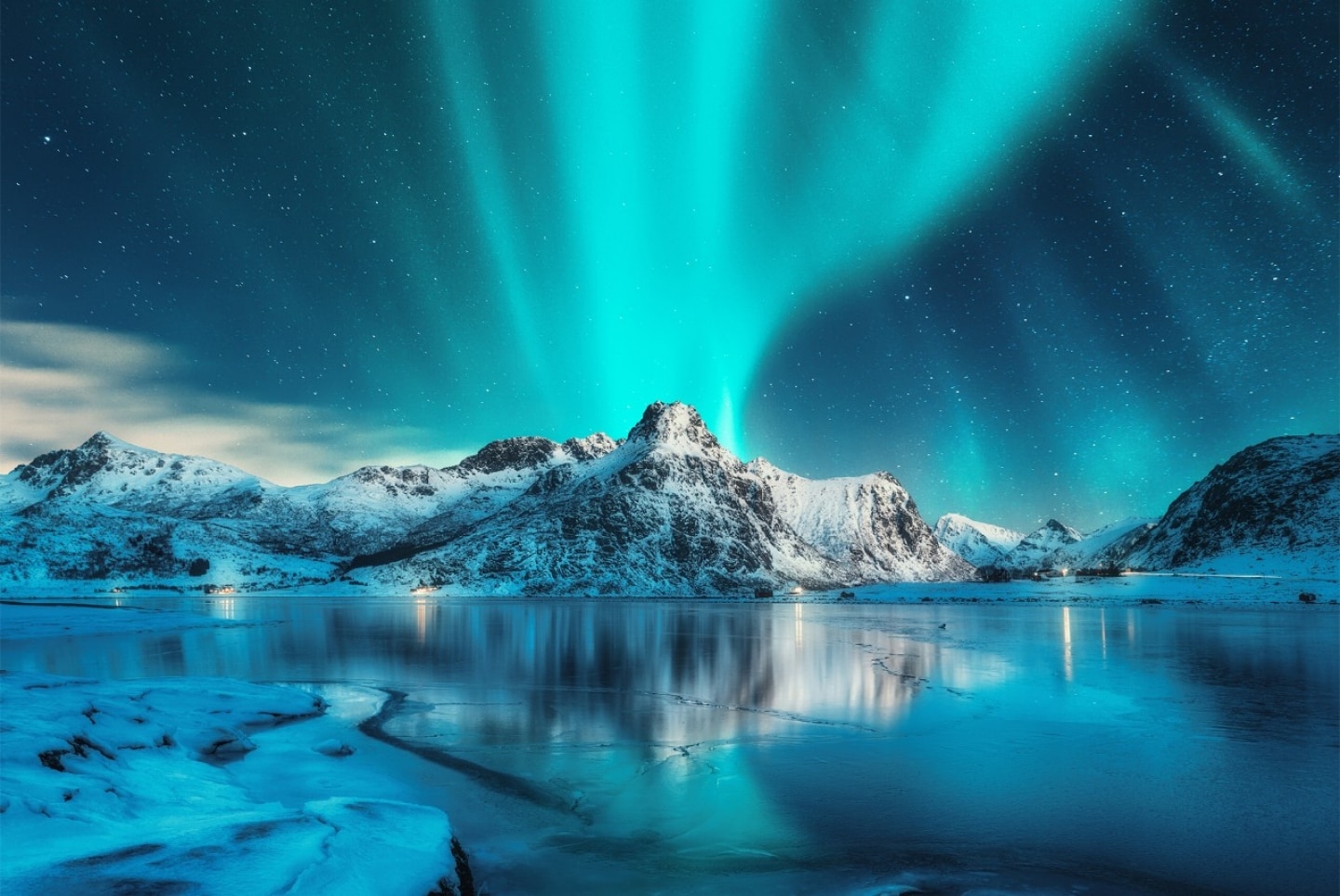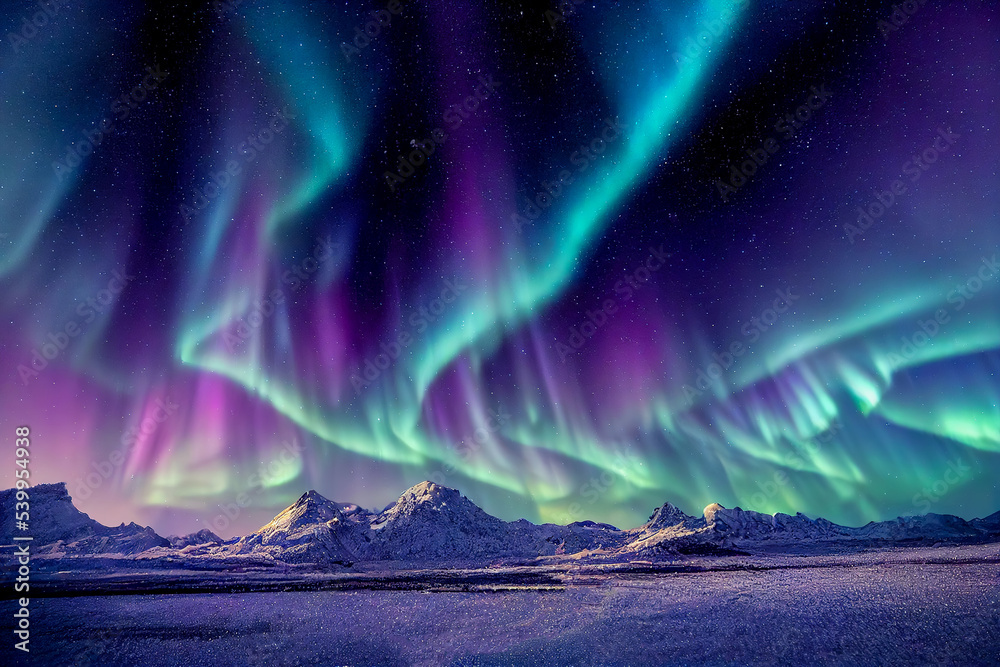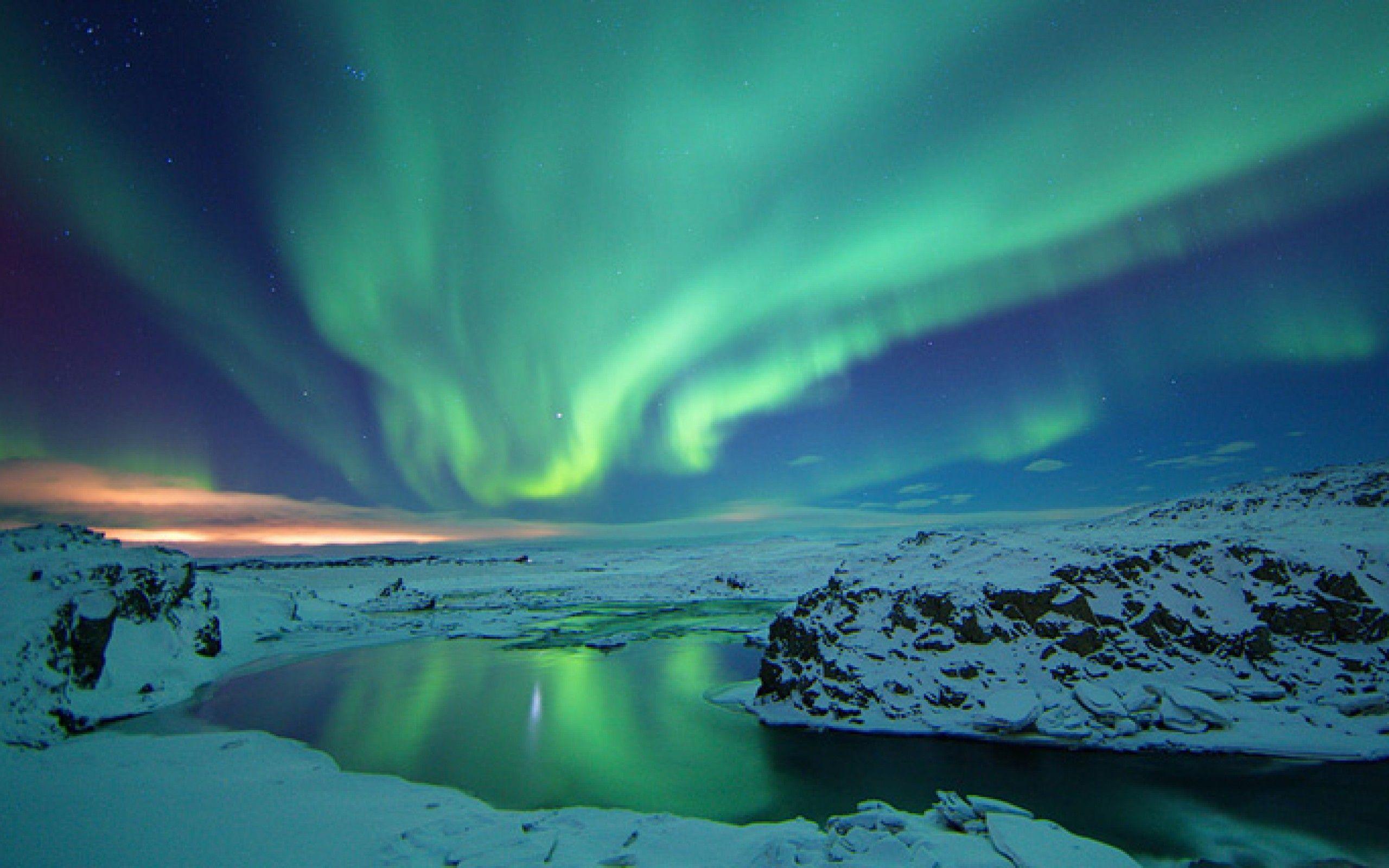Have you ever dreamed of seeing the Northern Lights, that incredible sky show usually reserved for places far up north? Well, something quite special has been happening, and it involves our very own North Carolina. It's not every day that the vibrant colors of the aurora borealis make an appearance so far south, making this a truly remarkable event for anyone lucky enough to catch a glimpse. People have been looking up, hoping to spot those dancing lights, and for good reason, too; it's a sight many never get to experience without a long trip.
This unusual appearance of the northern lights in North Carolina, is that, it comes down to some powerful activity happening way out in space, specifically from our sun. When the sun sends out big bursts of energy, sometimes called coronal mass ejections, these bursts travel through space and can interact with Earth's protective magnetic field. When that interaction is strong enough, it can push the area where the lights usually appear much closer to the equator, making them visible in spots like our state, which is quite a distance from the typical viewing spots.
The possibility of seeing these beautiful lights in North Carolina has, in some respects, generated quite a bit of buzz, and for good reason. It’s a moment that reminds us just how connected we are to the vastness of space, even when we’re just looking up from our backyards. So, if you’ve been hearing whispers about pinks, purples, and greens streaking across the night sky, you’re hearing about something truly out of the ordinary for our region, a real treat for the eyes.
- Chocolate Eggs Easter
- Does Jujutsu Kaisen Have Romance
- The Row Bucket Bag
- Swivel Outdoor Chairs Under 350
- 120 Lb
Table of Contents
- What Makes the Northern Lights Dance?
- Why Did North Carolina Get a Northern Lights Show?
- When Can We Hope to See the Northern Lights Again in North Carolina?
- How Can You Spot the Northern Lights Tonight in North Carolina?
- What Did the Northern Lights Look Like in North Carolina?
- Is Seeing the Northern Lights in North Carolina Truly Rare?
What Makes the Northern Lights Dance?
The northern lights, sometimes called the aurora borealis, are a natural light display in the Earth's sky, mostly seen in high-latitude regions. They are caused by disturbances in the magnetosphere, that, is a result of the solar wind. Basically, the sun sends out a constant stream of charged particles. When there's a big solar event, like a solar flare or a coronal mass ejection, it sends out a much larger burst of these particles, almost like a giant wave of energy heading our way.
When these charged particles from the sun reach Earth, they hit our planet's magnetic field. Our magnetic field acts like a shield, protecting us, but it also guides these particles towards the magnetic poles. As these particles interact with gases in Earth's upper atmosphere, like oxygen and nitrogen, they give off energy in the form of light. It's a bit like a neon sign, but on a cosmic scale. The different gases and the altitude at which they are hit create the various colors we see: green is most common, but reds, pinks, and purples can also appear, too.
So, the more energy the sun sends our way, the more intense and widespread the aurora can be. A very strong burst of solar energy can push the usual oval shape where the aurora appears much further away from the poles. This is what allows places like North Carolina, which are typically too far south, to get a chance to see this amazing natural light show. It's all about the sun's powerful activity and how it interacts with our planet, giving us a beautiful, temporary display.
Why Did North Carolina Get a Northern Lights Show?
The reason North Carolina recently had a chance to see the northern lights comes down to some really strong solar activity. We had what's called a G4 geomagnetic storm, which is pretty close to the strongest possible level. This storm was caused by a coronal mass ejection, or CME, that came barreling toward Earth from the sun. This morning, or rather, on a specific morning, this burst of energy made its way here, giving us an unexpected sky event.
When a CME hits Earth's magnetic field with so much energy, it can actually push the "auroral oval," which is the area where the northern lights are typically seen, much further south than usual. Astronomer Patrick Treuthardt mentioned that people could even see the lights as far south as the Florida Keys during one of these events, which really shows how powerful these solar storms can be. It takes a lot of solar energy to make the lights visible across such a wide area, especially in places like the Carolinas, where it's a truly rare sight.
The National Oceanic and Atmospheric Administration's Space Weather Prediction Center, or NOAA, tracks these events. For one particular night, the projection of the Kp index from NOAA was around 7.5 to 7.6. This Kp index is a way to measure the strength of geomagnetic activity, and a higher number means a greater chance of seeing the aurora further from the poles. A Kp index this high is quite significant, making the possibility of seeing the aurora in North and South Carolina really quite high, according to the latest information.
Understanding the Kp Index and Northern Lights Tonight in North Carolina
The Kp index is a way scientists measure how disturbed Earth's magnetic field is by solar winds. It's a scale from 0 to 9, where 0 means very little disturbance and 9 means an extreme geomagnetic storm. To see the northern lights in North Carolina, you typically need a very high Kp number, usually 7 or above. When the Kp index hits these higher numbers, it means the solar energy is strong enough to push the aurora's visibility much further away from the usual polar regions.
For example, the text mentions a Kp index projection of around 7.5 to 7.6 for a specific night. This is a very good sign for southern states hoping to catch a glimpse. It indicates that the burst of energy from the sun was powerful enough to really make an impact on our planet's magnetic field, allowing those beautiful lights to spread out. So, when you hear about the Kp index, you know it's a key piece of information for predicting if the northern lights might appear in unexpected places like North Carolina.
When Can We Hope to See the Northern Lights Again in North Carolina?
Looking back, the northern lights were certainly visible in North Carolina on a Thursday night into Friday morning, and then again on a Sunday morning. The text also mentions an outside chance of seeing the aurora borealis from North Carolina in early October 2024, which gives us a future date to keep in mind. For the recent sightings, the best viewing times were often between 2 and 5 a.m., or around midnight, which suggests that the middle of the night is typically the prime window for catching these faint displays.
There was also a mention of beginning the month of June with a chance to see the aurora borealis this weekend, alongside isolated storms. This highlights that these events can pop up with relatively short notice, depending on solar activity. While it’s never completely guaranteed, especially this far south, keeping an eye on space weather forecasts and local news outlets can help you be ready if another opportunity arises. It’s always a bit of a waiting game, but one that can pay off beautifully.
So, will North Carolina see the northern lights again this week, or anytime soon? It's hard to say for sure without current space weather predictions. As the text points out, there's a lot of uncertainty with these situations, and viewing the beautiful aurora borealis is not completely guaranteed, even when conditions seem right. However, knowing that it has happened, and that there are future possibilities like early October, keeps the hope alive for those who want to experience this rare sight in our state.
How Can You Spot the Northern Lights Tonight in North Carolina?
If the northern lights are predicted to be visible in North Carolina, there are a few things you can do to give yourself the best chance of seeing them. First off, and this is pretty important, you'll want to find a dark spot. That means getting away from city lights, which can really wash out the fainter glow of the aurora. The darker your surroundings, the better your eyes can adjust to the night, and the more likely you are to pick up on those subtle colors in the sky.
Secondly, timing is quite key. The text suggests that for the best visibility, you should look up around midnight, or specifically between 2 and 5 a.m. This is often when the Earth's magnetic field is best aligned to receive the solar particles that create the lights. So, if you're planning to look, be prepared to stay up a bit late, or wake up very early, to catch the display. It's a late-night or early-morning kind of show, generally speaking.
Finally, you need to keep an eye on local forecasts. Cloud cover can really affect your ability to see the lights. Even if the solar conditions are perfect, a sky full of clouds will block your view completely. So, check the weather, look for clear skies, and then find your dark spot. While there's always a lot of uncertainty with these situations, being prepared gives you the best shot at witnessing this incredible phenomenon in North Carolina, should it appear.
Finding the Best Viewing Spots for Northern Lights Tonight in North Carolina
To really get a good look at the northern lights in North Carolina, picking the right spot is pretty important. You need to escape the light pollution from towns and cities. Think about heading to rural areas, state parks, or national forests that are known for having dark skies. The further you are from streetlights, buildings, and general urban glow, the better your chances are of seeing the aurora's colors.
For instance, places in the mountains of North Carolina, or very rural parts of the eastern plains, might offer better conditions simply because there are fewer artificial lights around. You want a wide, unobstructed view of the northern horizon, too, if you can get it. Look for an open field, a quiet road, or a viewpoint that isn't blocked by trees or buildings. The more sky you can see, the better your chances of catching the display.
And don't forget to let your eyes adjust to the darkness. This can take about 20 to 30 minutes. Avoid looking at your phone screen or any bright lights during this time, as it will reset your night vision. So, find your dark spot, give your eyes time to adjust, and then look towards the northern part of the sky. With a bit of luck and clear conditions, you might just see those beautiful, shifting colors of the northern lights in North Carolina.
What Did the Northern Lights Look Like in North Carolina?
When the northern lights appeared in North Carolina, people who looked up were treated to a truly colorful display. Reports from places like the Raleigh area mentioned seeing streaks of pink, purple, and green across the skies. This happened even over some city lights, which is pretty amazing considering how much light pollution there usually is. It shows just how bright and energetic the aurora was on those particular nights.
An Asheville photographer even captured an incredibly rare event on a Thursday night, showing the northern lights dazzling in the starry, purple North Carolina skies. The lights, typically not visible this far south, really put on a show. The aurora's colorful green, red, and purple light shifts gently and often changes shape, making it a dynamic and almost alive phenomenon to watch. It's not a static picture, but rather a moving, flowing dance of light.
Photos were sent in from all over North Carolina, including from Statesville, Newton, Kannapolis, and the mountain region, showing that many people across the state got to witness this dazzling sight. It was a beautiful night sky from the northern lights for central North Carolina on a Sunday, too. The descriptions paint a picture of a sky filled with soft, shifting colors, a truly memorable sight for anyone who happened to be looking up at the right moment.
Is Seeing the Northern Lights in North Carolina Truly Rare?
Yes, seeing the northern lights in North Carolina is genuinely quite rare. Typically, you have to travel way up north, to places like Yellowknife in the Northwest Territories, or even further towards the Arctic Circle, to see this beautiful, green nighttime phenomenon. The fact that they were visible as far south as North Carolina, and even the Florida Keys, is a strong indicator of just how powerful the solar storms were that caused them.
The text explicitly states, "It's a rare sight to see them in the Carolinas." This emphasizes that these occurrences are not common. While auroras can often be observed on Earth, their visibility at lower latitudes like ours requires exceptional solar activity. So, when the northern lights do appear in North Carolina, it's considered a very special and unusual event, one that doesn't happen every year, or even every few years, necessarily.
The recent sightings were prompted by a G4 geomagnetic storm, which is a very high level of solar disturbance. It takes that kind of intense energy from the sun to push the auroral oval far enough south for us to see it. So, if you were among those who saw the northern lights in North Carolina, you truly witnessed something out of the ordinary, a brief moment when our state was connected to the powerful, beautiful displays usually reserved for the colder, more northern parts of our planet.
This article has explored the recent, rare appearances of the northern lights in North Carolina, explaining how powerful solar storms, like coronal mass ejections, can push the aurora's visibility much further south than usual. We discussed the significance of the Kp index in predicting these events and looked at the specific times and conditions that offered the best chances for viewing. The article also touched on what the lights looked like, with reports of pinks, purples, and greens, and confirmed just how unusual it is for North Carolina to experience such a beautiful sky show.



Detail Author:
- Name : Jayme Carter Jr.
- Username : lind.eriberto
- Email : aschinner@hotmail.com
- Birthdate : 1993-03-21
- Address : 7793 Davis Cliff Suite 018 Alexandreton, KS 55855
- Phone : 1-380-713-2822
- Company : Harber, Stark and Ryan
- Job : Housekeeper
- Bio : Soluta earum placeat nemo est atque totam numquam. Architecto voluptas sequi molestias repellat aperiam. Odit porro sed et ad ab. Quam quis impedit et molestiae qui.
Socials
linkedin:
- url : https://linkedin.com/in/trentbraun
- username : trentbraun
- bio : Natus ex et aut consequatur occaecati.
- followers : 2487
- following : 149
instagram:
- url : https://instagram.com/trent5981
- username : trent5981
- bio : Rerum ut non eum sint praesentium enim. Aut iusto et eum alias debitis.
- followers : 5695
- following : 614